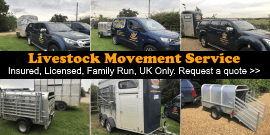Introduction to grassland management
Since moving to Dalmore, managing grassland has been a whole new experience for us. Even with (or maybe because we only have) ten acres of grass, we spend a lot of time thinking about it, reading about it and trying to make it work as well as we can. It’s a big learning curve for us and we’ll share with you what we’re learning.
We have a small flock of breeding ewes, plus followers, two Shetland heifers, a flock of 35 laying hens and three native ponies. The demands on the grass made by each of the species is different, and varies according to the season. Our ponies don’t need high quality grass – in fact, rich grassland is positively bad for them.
However, the grass will also have to support the heifers and our breeding ewes when in milk, and grow and fatten lambs and calves. Fortunately, the breeds we have chosen are traditional ones, with the ability to survive and thrive on lower inputs than modern commercial breeds.
Winter forage
We have decided to buy in our winter forage rather than make our own. To make our own, we would have to carry fewer stock in order to set aside land for conservation. We would also have to either invest in machinery to make hay (or haylage or silage) or employ a contractor to make it for us.
With such a small acreage, we feel we couldn’t justify the investment in machinery and would rather be able to buy good hay from a local specialist grower than try to grow our own and perhaps end up with poor quality forage. With our small acreage, we would likely be at the bottom of the contractor’s pecking order.
We’ve also decided to feed hay rather than haylage or silage, in an effort to keep things simple. Hay can be fed to the ponies, sheep and cattle and keeps well, although the nutritional content is generally lower than haylage or silage. However, this suits our breeds – haylage is too rich for our ponies and silage is unsuitable for them – and as above, the traditional breeds do well on less rich diets. Also, with our small numbers of stock, we probably wouldn’t use a big bale of silage quickly enough to stop it going off.
The following is not intended to be a bible of grassland management, but we hope it will be useful for those starting out in smallholding and who have some grass to manage. Apart from attending to animal health and welfare, managing grass is probably the most important task for the smallholder. It impacts on costs associated with buying in feed, livestock health and profitability.

About Rosemary Champion
Rosemary lives on a 12 acre smallholding in Angus, in the east of Scotland, where she keeps Ryeland Sheep, Shetland cattle and assorted poultry. She was destined to be a smallholder from an early age.
Further Reading
 Weed Management for Organic Farmers, Growers and Smallholders Gareth Davies |  Improved Grassland Management John Frame |










